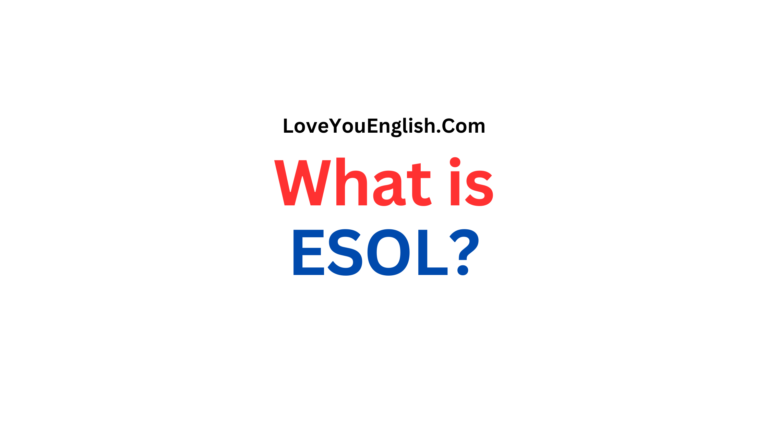How to Use Subtitles Effectively for Learning English
Have you ever watched your favorite TV show or movie with subtitles and thought, “This would be a great way to improve my English!”?
Well, you’re absolutely right!
Using subtitles is a powerful tool that can boost your English learning in ways you might not expect.
Whether you’re a beginner or more advanced, subtitles offer a wealth of opportunities to improve your listening, reading, vocabulary, and even your speaking skills.
In this post, I’ll tell you how you can use subtitles effectively to enhance your English learning journey.
1. Why Use Subtitles for Learning English?
Before we get into the “how,” let’s first explore why subtitles can be so helpful when learning a new language.
- Listening Comprehension: Subtitles provide a written version of what’s being said, making it easier to understand fast speech or unfamiliar accents.
- Vocabulary Expansion: You can encounter new words, idiomatic expressions, and phrases that native speakers commonly use, which helps expand your vocabulary.
- Pronunciation: Reading along with the subtitles helps you understand how words are pronounced and their correct intonation.
- Contextual Learning: Watching content in context (like movies or shows) helps you understand how and when certain words or phrases are used in real-life situations.
- Confidence: Using subtitles allows you to follow along at your own pace, boosting your confidence as you get more comfortable with the language.
With all these benefits in mind, let’s dive into how you can make the most of subtitles while learning English.
2. Choosing the Right Content
The first step to using subtitles effectively is choosing the right content. You want to pick something that interests you but also matches your current English level. Here are some tips on how to choose:
- Pick Shows or Movies You Enjoy: Choose content that excites you. This could be anything from a favorite sitcom to a thrilling action movie or a lighthearted animated show. The more engaged you are, the easier it will be to focus and learn.
- Level-Appropriate Content: If you’re just starting, go for shows or movies with simple language and clear pronunciation. Children’s cartoons or shows like Friends are great examples for beginners. As you improve, you can move on to more complex content.
- Use Content with Clear Dialogue: Avoid shows or movies with a lot of background noise or complex slang, especially if you’re a beginner. Clear dialogue makes it easier to follow along with the subtitles.
3. How to Use Subtitles at Different Learning Stages
As you progress in your English learning, the way you use subtitles can change. Here’s how to use subtitles effectively based on your English level:
For Beginners:
If you’re a beginner, it’s helpful to use subtitles in your native language. This allows you to follow along with the content and gradually familiarize yourself with the sounds of English.
- Watch with Native Language Subtitles: Start with subtitles in your native language to understand the plot and context. This will help you associate English words with their meanings in your own language.
- Pause and Repeat: Don’t be afraid to pause the video and rewind if you didn’t catch something. Repetition helps with memory, and you’ll soon start recognizing words and phrases that appear frequently.
- Keep it Short: Start with short episodes (like sitcoms) or children’s shows that use simpler language. They’ll allow you to focus on a limited amount of new vocabulary at a time.
For Intermediate Learners:
Once you’re comfortable with basic English, you can switch to subtitles in English itself. This will help you focus on understanding the words as well as their meanings.
- Use English Subtitles: This helps you see the exact spelling of words and gives you context clues for words or phrases you don’t know.
- Learn New Vocabulary: When you come across a word you don’t understand, pause the video and look it up. Write it down and try to use it in your own sentences.
- Focus on Phrasal Verbs and Idioms: English subtitles often include common phrasal verbs and idiomatic expressions that you may not find in textbooks. Pay attention to these, as they’re commonly used in everyday English.
- Watch Without Subtitles: Once you’re feeling more confident, try watching parts of the content without subtitles. This will improve your listening skills and force you to pay closer attention.
For Advanced Learners:
If you’re at an advanced level, the focus should be on refining your understanding and improving your fluency.
- Turn Off Subtitles Occasionally: Challenge yourself by watching without subtitles to test your listening comprehension. If you miss something, go back and use the subtitles to check what you missed.
- Focus on Native-Like Phrases: Pay attention to how native speakers express themselves, the rhythm of their speech, and the use of slang and informal phrases. Try to mimic these in your own speech.
- Speed Up the Playback: If you feel confident, try speeding up the playback slightly. This will make it more challenging and improve your listening skills even further.
4. Effective Strategies for Using Subtitles
Using subtitles the right way can significantly improve your language skills. Here are some strategies to help you get the most out of subtitles:
1. Use Subtitles to Improve Listening Skills
At first, you might find it hard to understand everything that’s being said in a video or movie. Subtitles can bridge the gap and help improve your listening comprehension.
- Watch and Listen Simultaneously: Focus on the spoken words while reading the subtitles. This combination helps connect spoken English to written English in your mind.
- Focus on Natural Speech: Pay attention to how native speakers speak—how they link words together, use contractions, and change their tone. This will help you understand English as it’s spoken in real-life situations.
2. Use Subtitles to Learn New Words
Subtitles are like a real-time vocabulary list, showing you how words are used in different contexts.
- Note New Words: When you come across a new word, pause the video and write it down. Look up its meaning and try to use it in sentences.
- Learn Phrasal Verbs and Idioms: Many everyday expressions are best learned through subtitles. You might encounter common phrasal verbs like “get along,” “give up,” or idiomatic phrases like “break the ice.” These are essential for sounding natural in English conversations.
- Observe Word Pronunciation: Subtitles give you a clear representation of how words are spelled. Listen closely to how they’re pronounced and practice saying them out loud.
3. Use Subtitles to Improve Pronunciation
Using subtitles in combination with listening can help you improve your pronunciation.
- Watch for Stress and Intonation: Pay attention to how words are stressed and how the pitch of a speaker’s voice changes. Try to mimic these changes in your own speaking.
- Mimic Native Speakers: Once you get familiar with how words are pronounced, repeat what you hear in the show or movie. This helps with improving your fluency and sound more like a native speaker.
4. Practice Speaking with Subtitles
After watching with subtitles, try to speak out loud what you’ve learned.
- Repeat Lines: When you hear a sentence you like, pause and try to repeat it. This can help improve your fluency and make your speech sound more natural.
- Shadowing Technique: This technique involves repeating what the speaker says, mimicking their tone, and speaking along with them. It helps with pronunciation and improves your overall speaking skills.
5. Challenges You Might Face with Subtitles
While subtitles are an excellent tool, they aren’t perfect for everyone. Here are a few challenges you might encounter and how to overcome them:
- Over-reliance on Subtitles: Sometimes, it’s easy to get too comfortable with reading subtitles, but this can prevent you from focusing on listening. Gradually try to reduce your reliance on them by watching without subtitles for shorter periods.
- Distraction: Some learners might get distracted by reading subtitles and forget to focus on the visuals or the flow of the conversation. Try to strike a balance between reading and watching.
- Confusing Accents or Slang: English speakers have different accents, and slang can be tricky. If you struggle to understand, try watching the same content with subtitles multiple times or use subtitles in your native language.
6. Additional Tips for Maximizing Subtitles
To make your subtitle experience even more effective, try these tips:
- Watch with subtitles in different languages: When you feel more confident, you can switch subtitles to another language to test your understanding.
- Watch in short sessions: Don’t overdo it! Watch in short bursts, focusing on a small portion at a time. It’s better to watch a 10-minute clip several times than to binge-watch hours of content.
- Use subtitle apps: Some apps or websites offer interactive subtitles that highlight the words as they are spoken, which can help you follow along more easily.
Conclusion
Using subtitles to learn English is a fun and interactive way to improve your listening, vocabulary, pronunciation, and overall fluency. Whether you’re a beginner or an advanced learner, subtitles are a versatile tool that can help you understand and enjoy English media while learning at your own pace. Just remember, the key is to use subtitles as a support tool—not as a crutch. Keep challenging yourself, and before you know it, you’ll be understanding and speaking English like a pro!
So, the next time you sit down to watch a movie or TV show, make sure to turn on those subtitles and start learning!
More topics:
- Everyday Tips to Help You Practice Your English
- The Art of Describing People in English: A Guide
- Best Tips to Improve Your English Conversation Skills
- 10 Proven Tips to Practice Speaking English At Home
- Phrases and Vocabulary in English for Clothing and Accessories
- What is ESOL? (With Essential Tips for English Learners)
- Should You Watch Movies with Subtitles?
- How to Understand English Accents: A Guideline







